Confectionately Yours – Conversation With The Son-Of-A-Son-Of-A-Candymaker
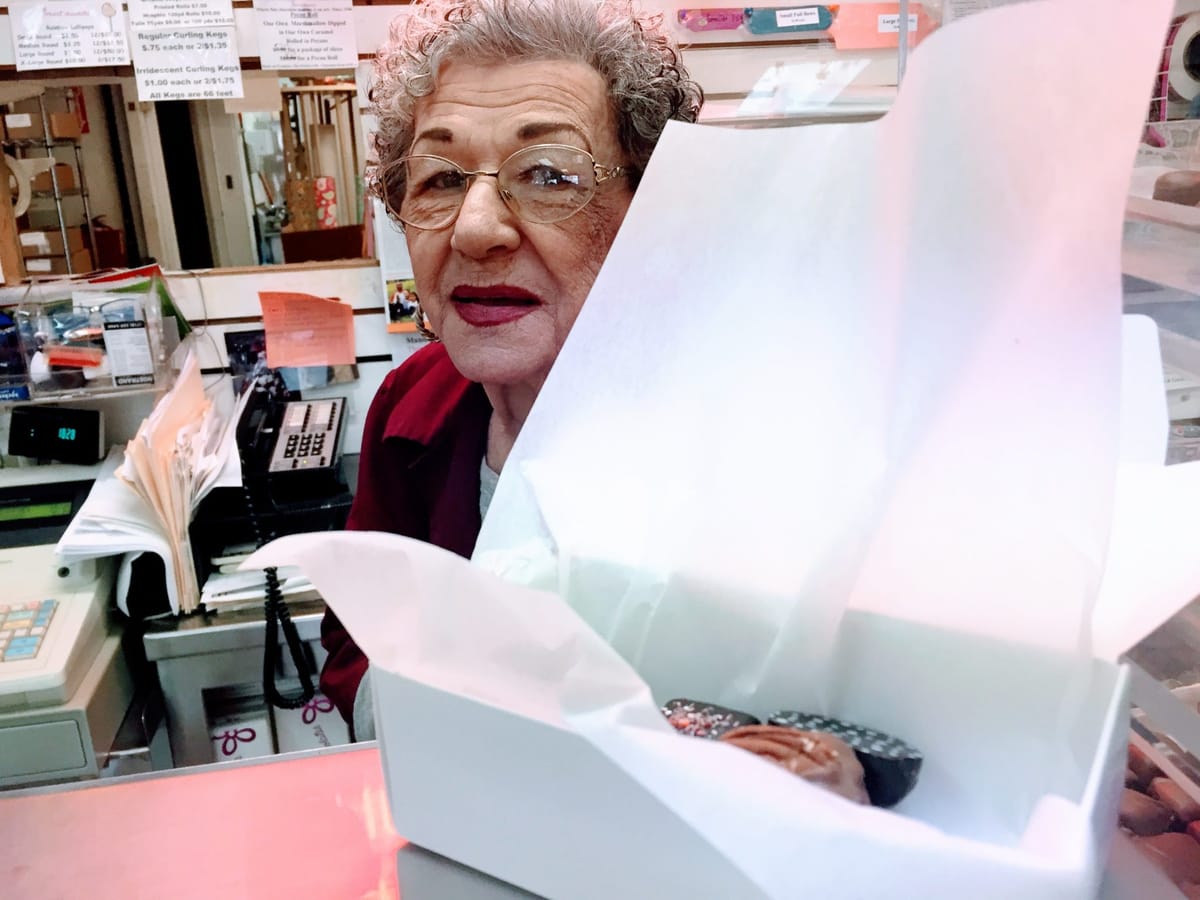
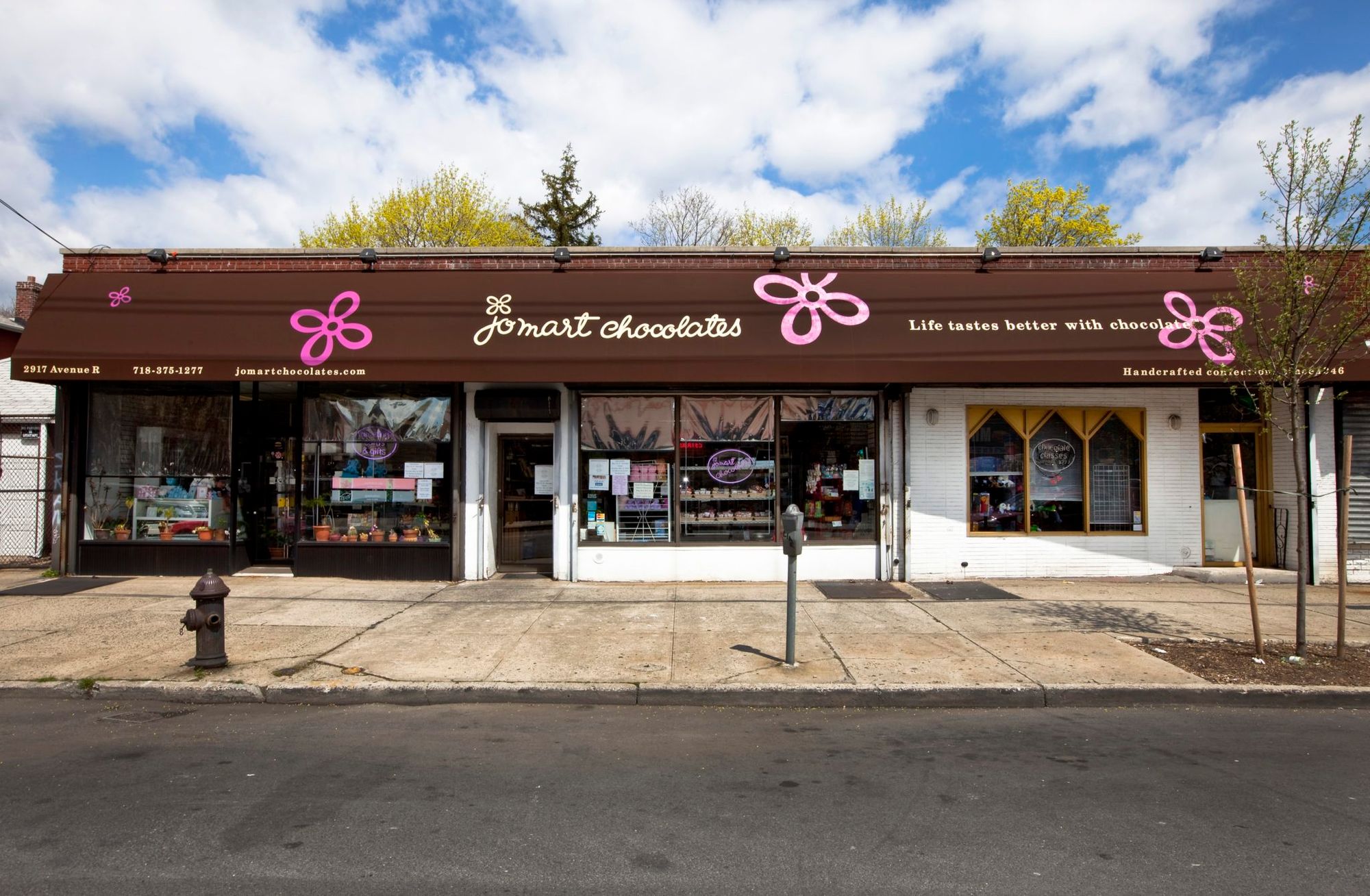
MARINE PARK – I pull in front of an unpretentious ‘60s modern storefront at 2917 Avenue R, and enter what I momentarily mistake for a toy store, because of the explosion of color and playful form, except then there’s that aroma… No mistaking it.
It’s a joyful smell which tickles the earliest memory, pulling up Easter baskets and Jack-O-Lantern pails, and bittersweet oranges, nestled into the toes of overstuffed stockings. It’s chocolate … JoMart Chocolates.
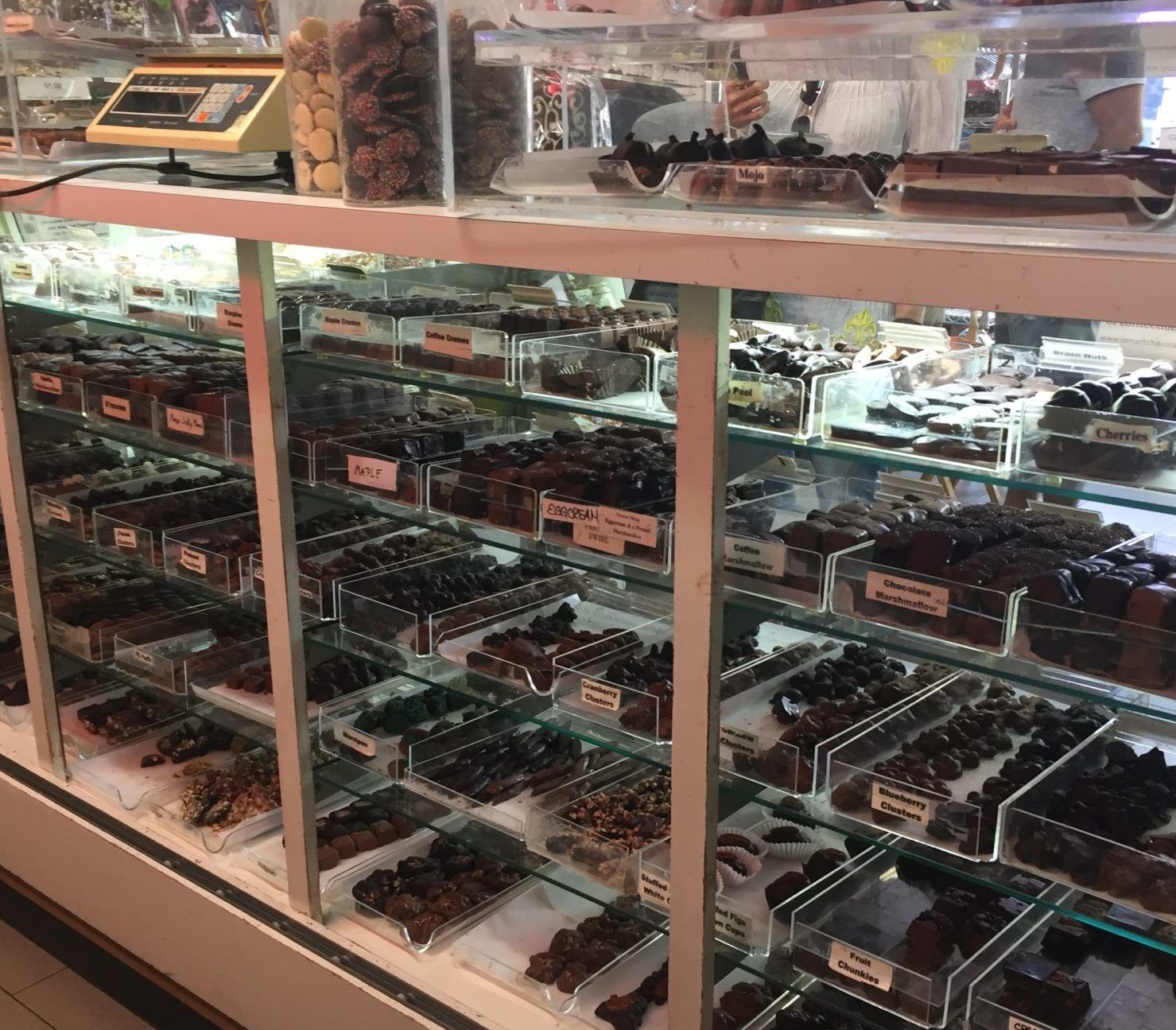
The owner, Michael Rogak is a spry guy with a salt ‘n’ pepper handlebar mustache and eyes that twinkle like Santa’s. He greets me with a firm handshake and a continental truffle, a layer of dark chocolate over milk, and hazelnut through and through.
I’ve won the golden ticket, I wonder, as Michael beckons me behind showcases of earthly delights, past an impeccable employee, wrapping bars in gold foil, and into a room where three mesmerizing wheels spin liquid dark, milk and white chocolate.

“These are tempering machines,” Michael explains. “We’re dealing with a temperamental product. Unless the chocolate is the right temperature and agitated properly, you’re not gonna have it drying with a luster. It’ll have white streaks on it, which is caused by poor storage or poor manufacture. Since we eat with our eyes, this is important.”
“How do you choose your source chocolate?” I ask. “I eat it,” Michael answers.
“I get it in 5-kilo blocks. I taste every batch that comes in. I spot check. But that’s only the beginning.”
Peering into a back office of neatly stacked boxes, I can make out a woman with a beautiful silver bob leaning into a phone call. She looks all-business in this world of deliciousness.
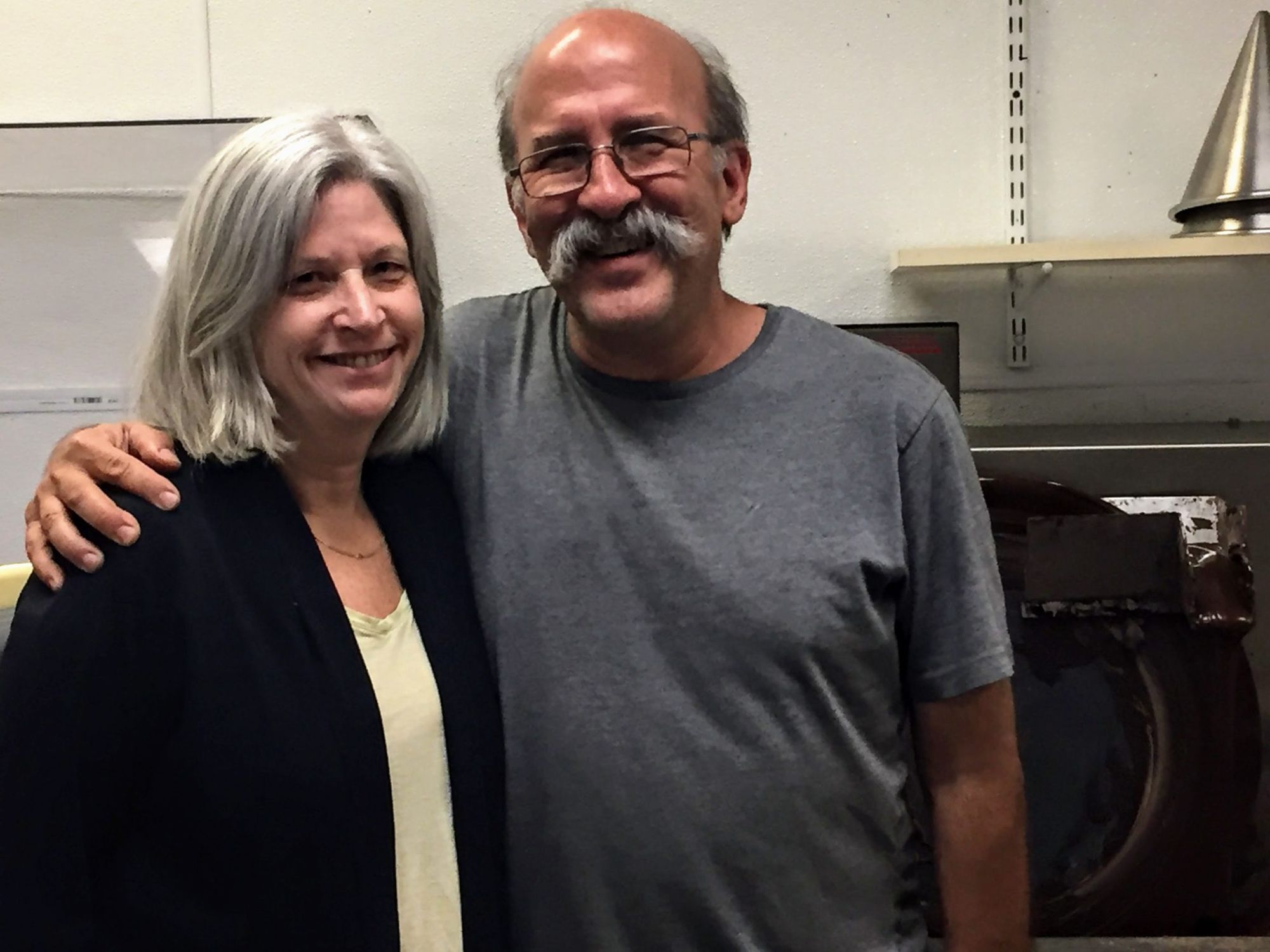
“My wife, Debbi,” Michael says. “She’s been working with me from the very beginning. We’ve been married 42 years. Years ago she was actually one of my head chocolate dippers. Then carpal tunnel and five hand surgeries knocked her out of that, so now she’s gotten more involved with packaging and running my crew.”
“Does she come from a chocolate family too?” I ask. “No, her father had a luncheonette near Yankee Stadium, and a Kosher deli near Queens College. But we both come from food.
Michael offers me coffee and a seat next to a sparkling slop sink.
The History
“My grandfather was a candy and chocolate manufacturer in Brownsville in the 1920s and 30s. He had a big factory, but he never made a lotta money. He made a lot of mistakes.
My father worked there as a kid, so did his first cousin Joey. After World War II, since he didn’t finish college on the military’s dime, my father decided to open up a small chocolate outfit, but he wanted to make a quality product rather than a cheaper product like his father did. He knew the basics of what to do, he was just gonna use better ingredients.
He set up a small factory on East New York Avenue in 1946, and a retail store on Franklin Avenue, just north of Eastern Parkway, right by the Brooklyn Museum. His partner left the business and my grandfather joined my father, because he was already out of business.”
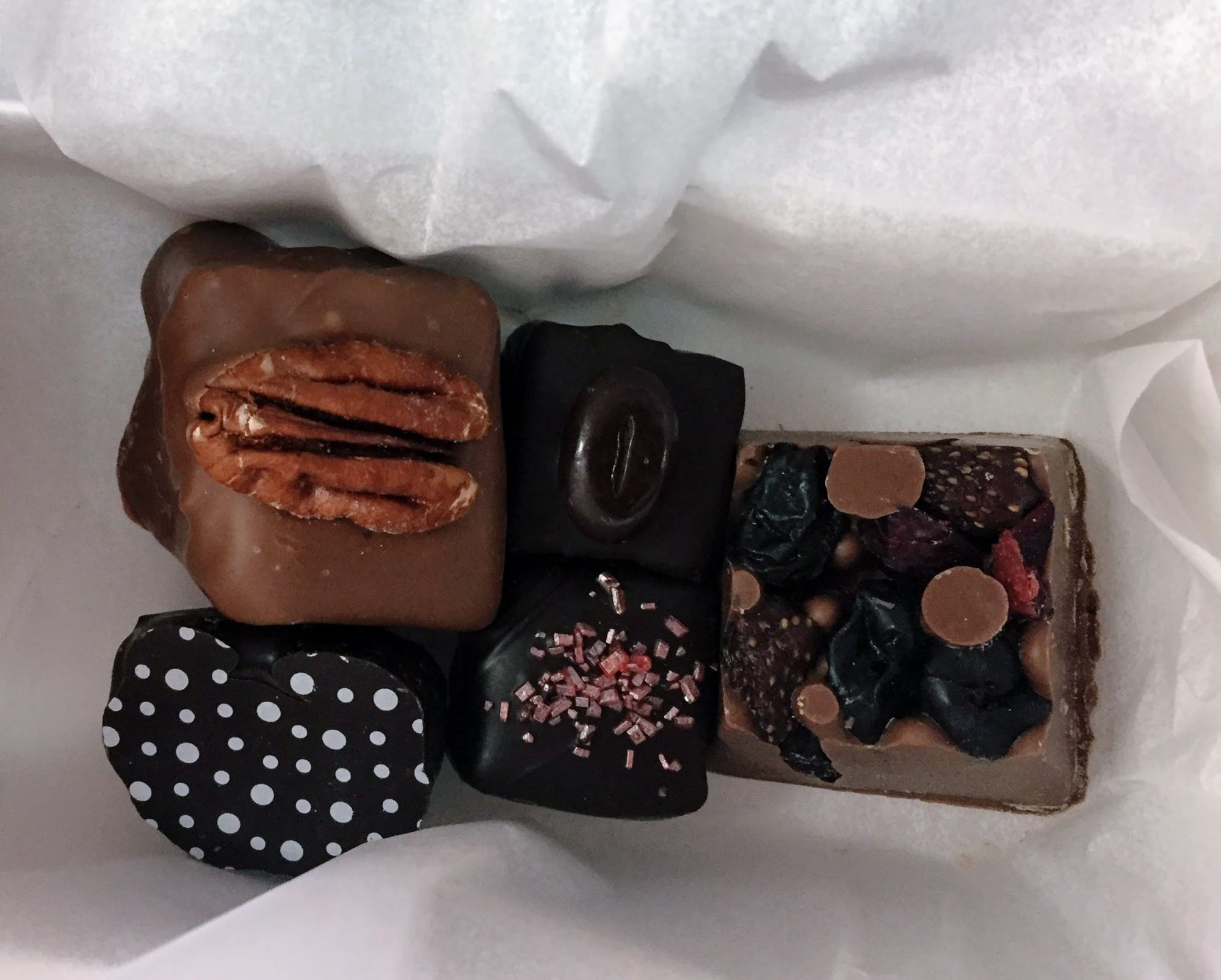
“When World War II ended, people hadn’t been celebrating holidays, as families, for years. My father figured they were ready to celebrate, and ready to go for better quality. In no way, shape, or form was it easy. When he opened up, he had 6 competitors within 2 blocks of him. Now as we look back, every one of them is gone.
My father even had a chocolate food truck in the early ‘50s. He tried everything. All of us who feed people, we have to feed our families too, so there’s nothing you don’t try. But never, ever cut the quality of your product. He lived by that. Raise the price, do what you have to do, but never cut the quality. He moved to this location in 1959 and consolidated manufacturing and retail in one location.”
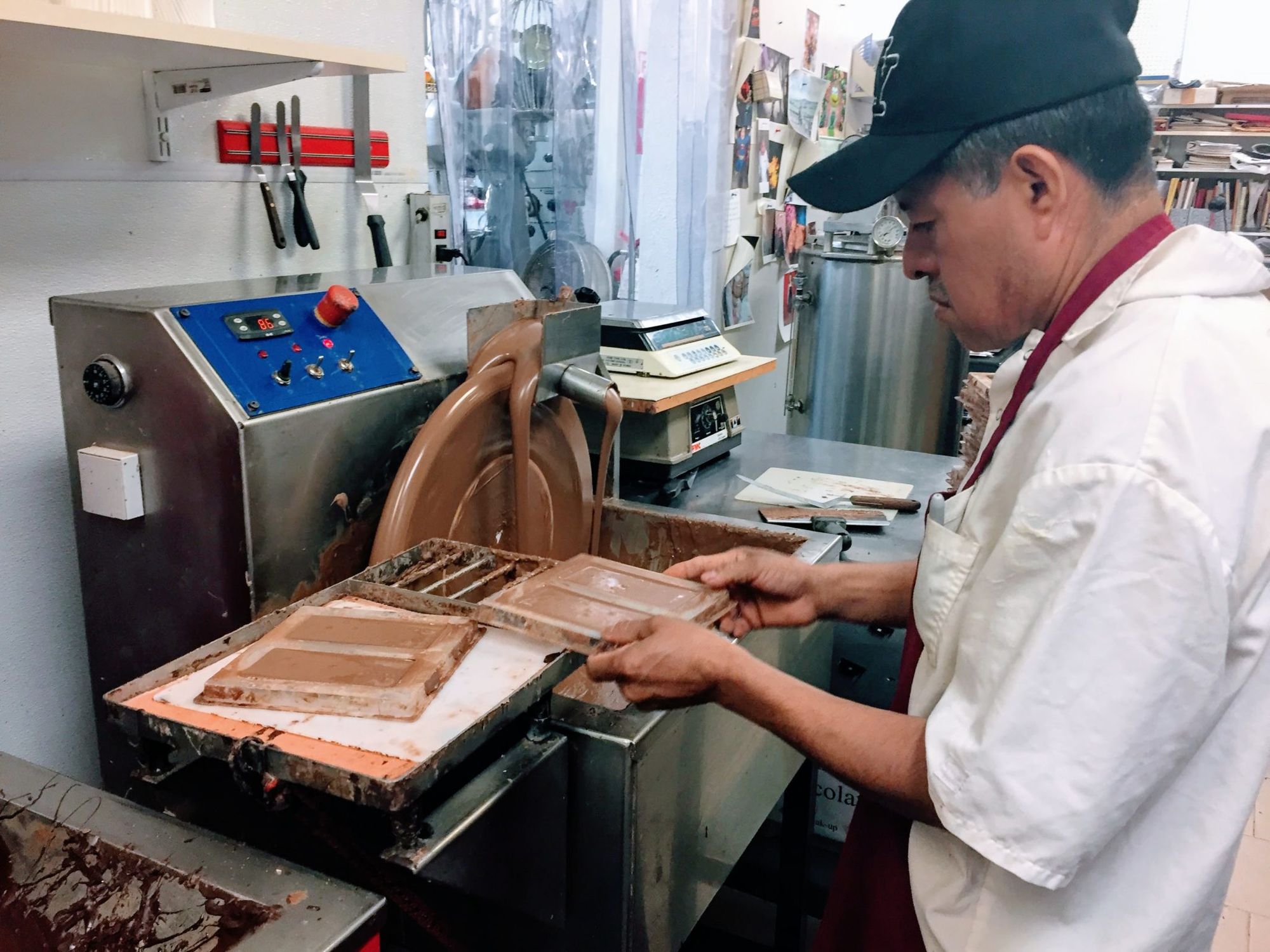
“When did you start working here?” I ask.
“I was my father’s helper since I was nine. I never knew what it was like to have a vacation, because on school breaks I helped. My earliest two jobs were putting eyes on bunnies and gift wrapping for Christmas. My dad would get these orders, 200 boxes of chocolate. Well, someone had to wrap them.”
“My next job was cleaning, and then I was given tasks to do that were part of the manufacturing. I didn’t start getting my hands into chocolate until I was in high school. In the mid-seventies when I was in college, I was counting the days I wouldn’t be here anymore, because I needed to have a life.

My mother was whispering over one shoulder: ‘I don’t want you to work so hard like your father. I want you to wear a suit, and go out to lunch with the men.’ And my father, over the other shoulder: ‘Go to college, become an accountant.” And me, I gravitated towards teaching. My timing couldn’t have been worse.
I started teaching in 1975, when the city was firing teachers. So two days after I got married, and a couple of weeks into my teaching, I got laid off. So I came here and started working full time. That was 42 years ago. So I had the honor and the struggle of working for my father, then with my father, and ultimately taking over the company.
Looking back, it couldn’t have worked out any better because knowing how my personality has shown itself, I would never have survived in a big organization where I couldn’t call it as I saw it.”
The Name
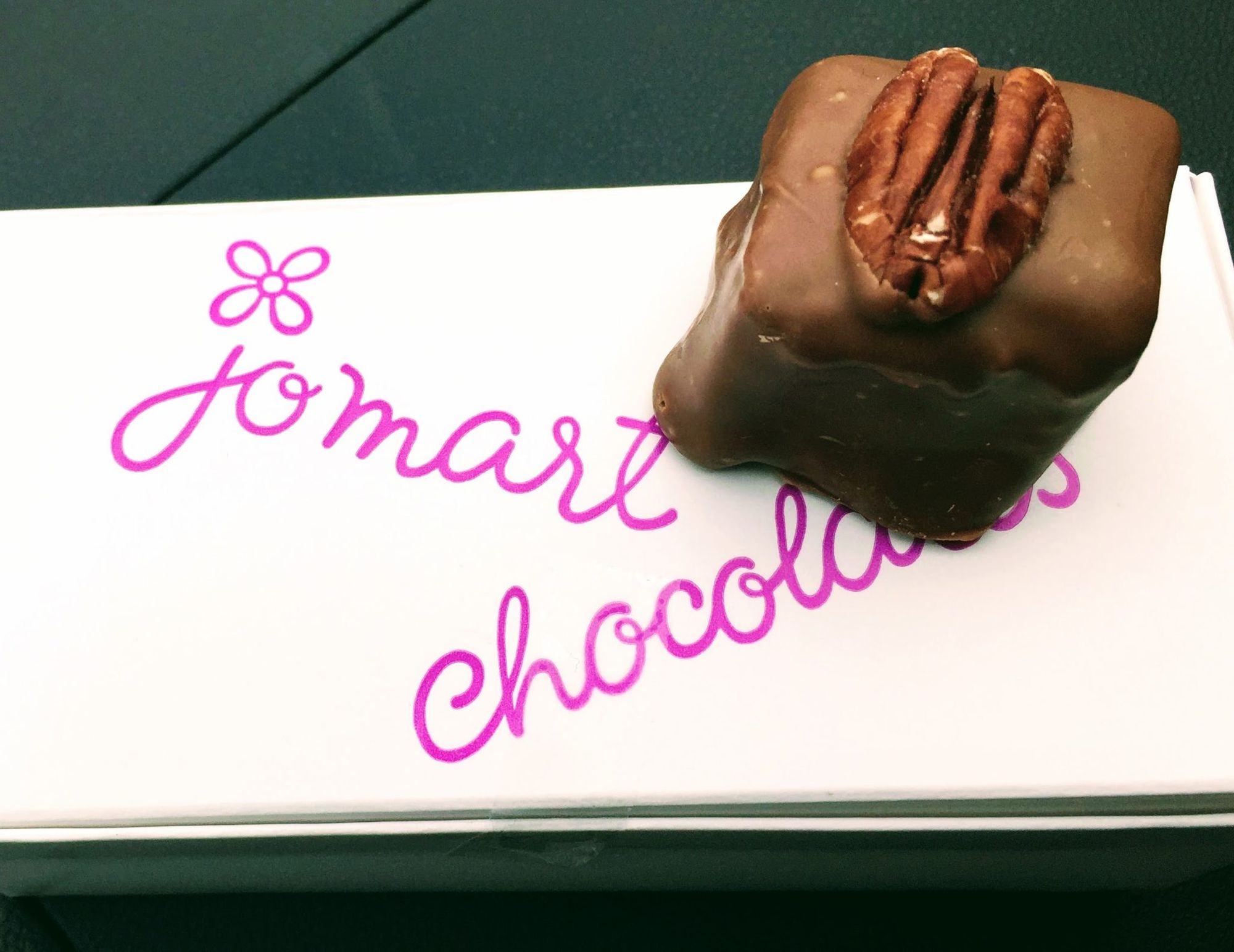
“My father’s name was Martin, and his original partner’s name was Joseph, thus – JoMart”
“And you didn’t ever think to change the name?” I ask.
“It was a less wasteful time than we’re in now. I said to my father: ‘You had such a new company, why didn’t you change the name?’ Remember, he was a depression baby, and his answer was: ‘The sign was printed, the stationary was made, what are you gonna do? Throw it all in the garbage?’
My father was never very brand-conscious. We’d be someplace and people would say: ‘What do you do?’ and he’d say ‘We make chocolate.’ And they’d say ‘What’s the name of the company?’ His answer would be: ‘Oh, it’s a little company, you would never have heard of it.’ And he’d end the conversation. He always liked being under everyone’s radar. Just doing his thing, working hard.”
The Process
“I saw some antique chocolate molds when I came in,” I say, “and they reminded me of these molds I once saw in the window of an old German diner in the Bronx, where my mom grew up. I wonder if you can speak to the tradition of chocolate making in New York?”
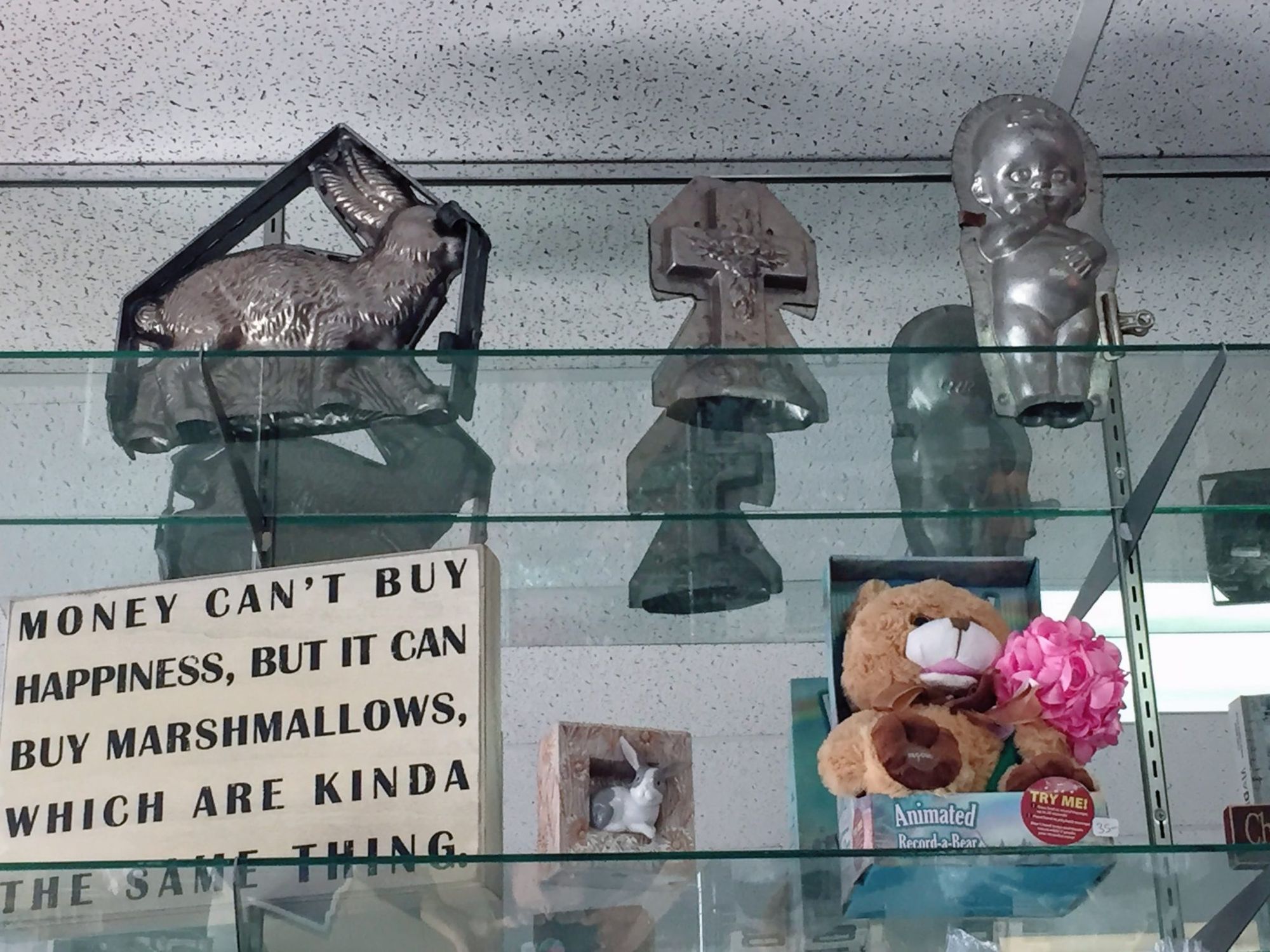
“In those days you only used metal molds,” Michael replies. “You didn’t see plastic molds ‘till the mid-sixties. We do still use some metal molds.”
“The large chocolates I see here at Easter—the kewpie doll, the cross, the bunny with the basket on his back, they’re classics, right?” I ask.
“Yes. A lot of the old designs have been remade in polycarbonates. They’re lighter, easier to keep clean, and easier to store.”
“Ice cream parlors used to make chocolate in the basement,” Michael continues. “You could have a candy store with a soda fountain, and they served food, and they made chocolate, and they did ice cream! So diners made chocolate too, and in that era, they tended to be German.
There was a strong presence of German candy makers, even when I came into the business. The joke was that some of the big companies selling ingredients would meet all the German chocolate makers as a group, to offer them one price, and everyone else was offered another price, which usually was about 10 percent higher.
My father would tell me this and I blew him off, ‘Yea sure. Seriously? This goes on?’ This was 1975. And one day there was this salesman from one of these big companies and I had no filter, I would say anything—not much has changed—and I said to him: ‘Look, I couldn’t get to the meeting, could you give me the prices?”
And he said ‘Oh sure, it’s the prices I’m going to show you now, but minus 10%.’ And I signed the contract right on the spot. They transferred him to Texas, which, think about it, a black salesman, in Texas, in the seventies? He lost his job. But really he was just part of a system that catered to this group of German-Americans.”
Candymaker
“I’m not just making a chocolate bar and putting stuff in it, we’re making the stuff.
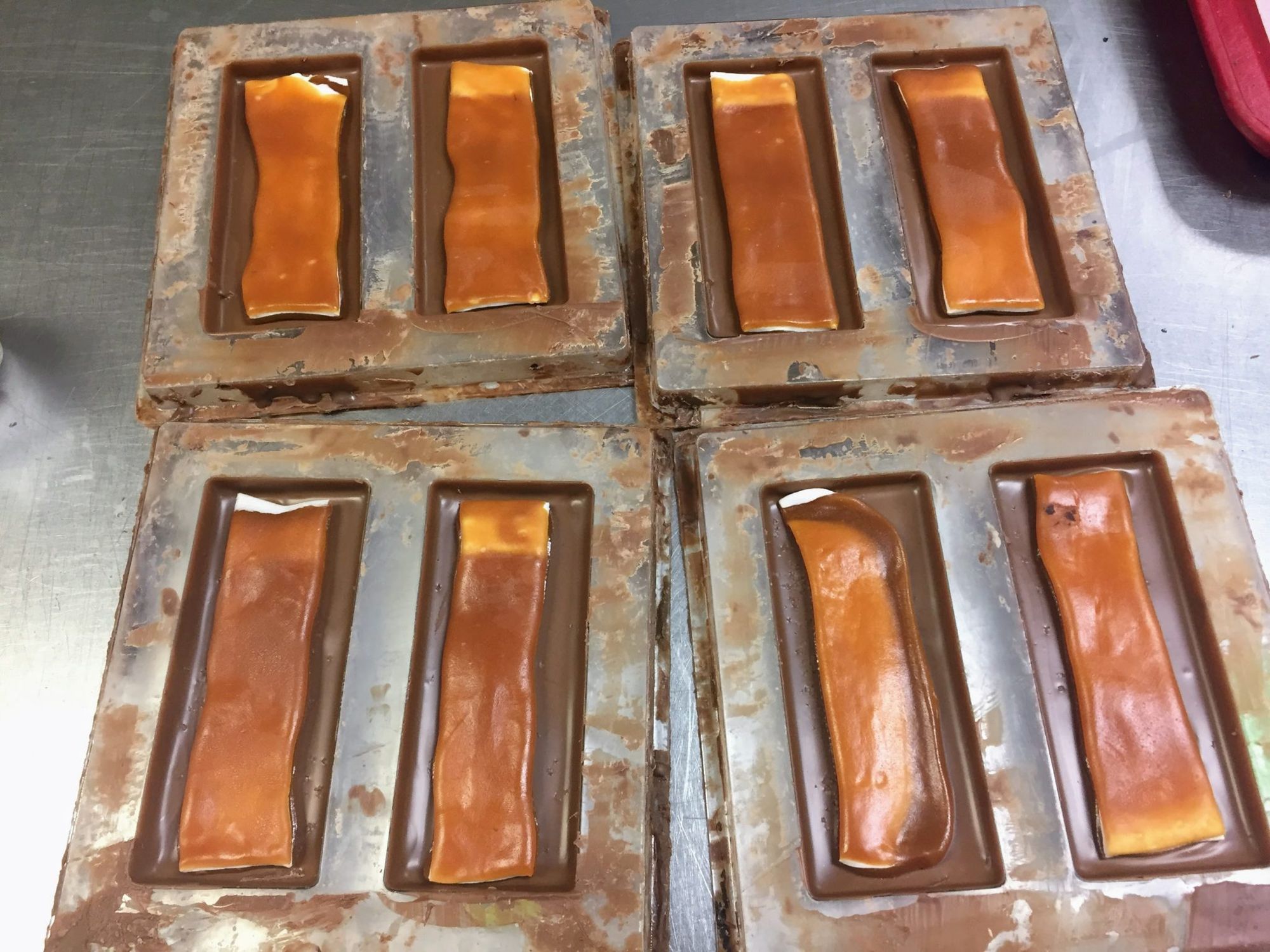
When we’re doing a chocolate-covered marshmallow, we’re making the marshmallow from scratch. When we’re doing a chocolate-covered caramel, we’re making the caramel. When I sign off on things as son-of-a-son-of-a-candymaker, I’m not just calling myself a chocolate guy. I’m a candymaker. My confections are co-stars to the chocolate.
We hand-dip everything. Oranges, apricots, pineapple, blueberries. Think of it as the ultimate in quality control. You have a person making one piece of chocolate at a time. They’re touching each piece. They’re putting a little design on top of each one. There’s a human connection. As opposed to the same product going through an assembly line.
Before we had the equipment, we only had hand-dippers working out of pots of chocolate. When the business began to grow, although I did buy some equipment, it was important to me that the look and feel did not change. I only use machines to temper the chocolate. That’s it. We still hand-dip. We’re making all our bars, it’s all hand done.”
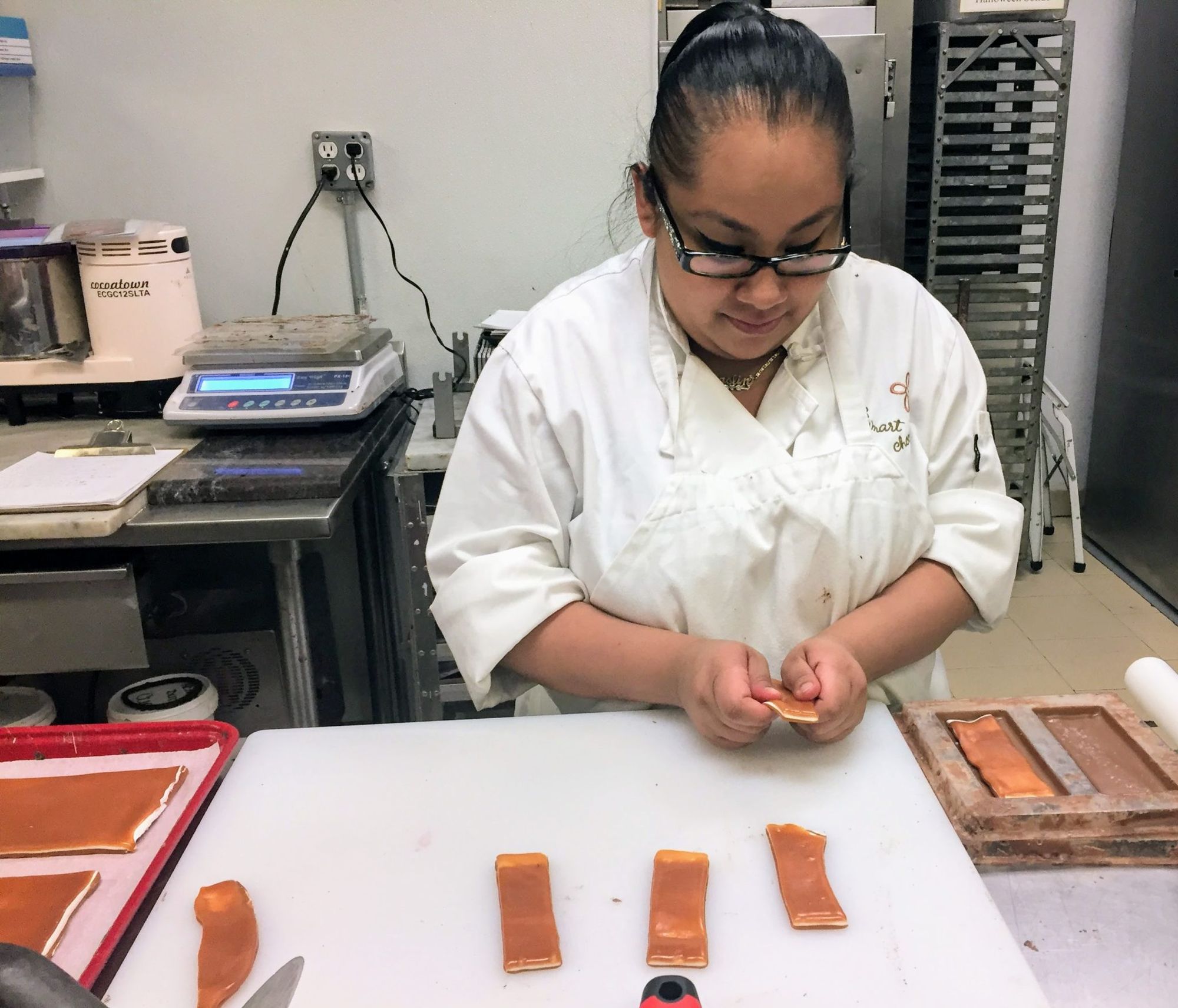
“So what are your best sellers?” I ask.
Michael exhales noncommittally. “It changes. We’ve been all over the map. Forgetting about any individual flavors now,” he cautiously proceeds, “caramels are the comfort food of the industry.
When the financial meltdown of 2009 happened, people were scared —itless, right? The sky was falling down. And that included me, because this was my first recession after my father died, and I started thinking about public perception, which is everything.
Companies were cutting back on employee parties, ‘because it didn’t look right. People were still working their butts off, but now it didn’t look good to reward them. Conspicuous consumption. And I was looking at what we were doing and saw that we were making eighteen varieties of truffles, but only four varieties of caramel.
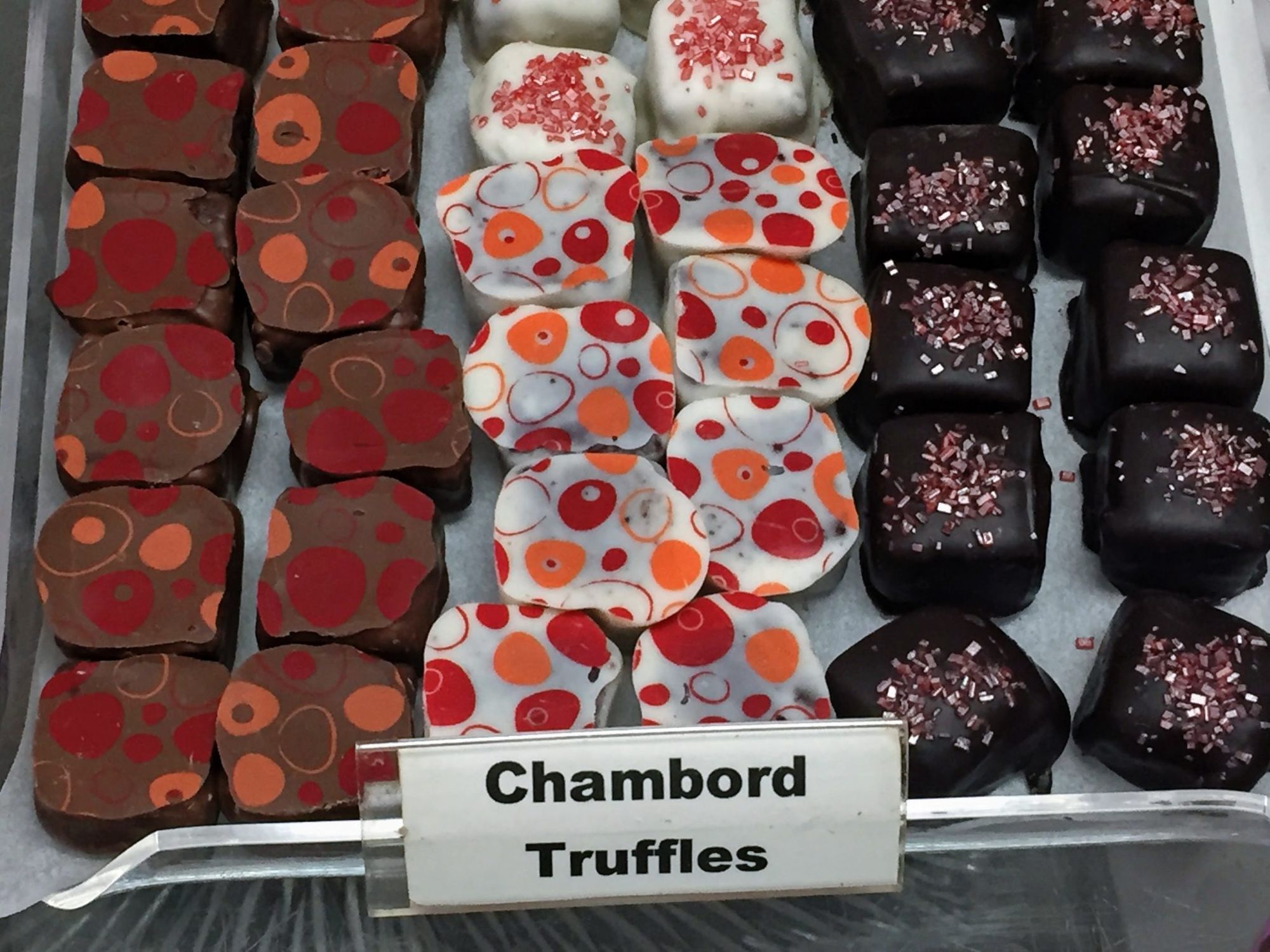
You know what? I thought, I gotta make people feel less like they’re eating luxury, and more like they’re eating comfort. Because what happens during bad times, whether it’s a plane hitting a building or a tsunami, people stop giving gifts to others and they start giving to themselves.”
“So I went after the comfort angle and expanded my selection of caramels. We were doing salted caramel and vanilla caramel, but we reworked things and came up with nine or ten more varieties of caramel. And the reception was fantastic.
A pecan caramel, a ginger caramel, a lavender caramel. Truffles stopped selling for a while, but I was like: ‘Okay, cool.’”
And this is why the son-of-a-son-of-a-candymaker is still in business. He follows his customer’s sweet tooth, not his own.
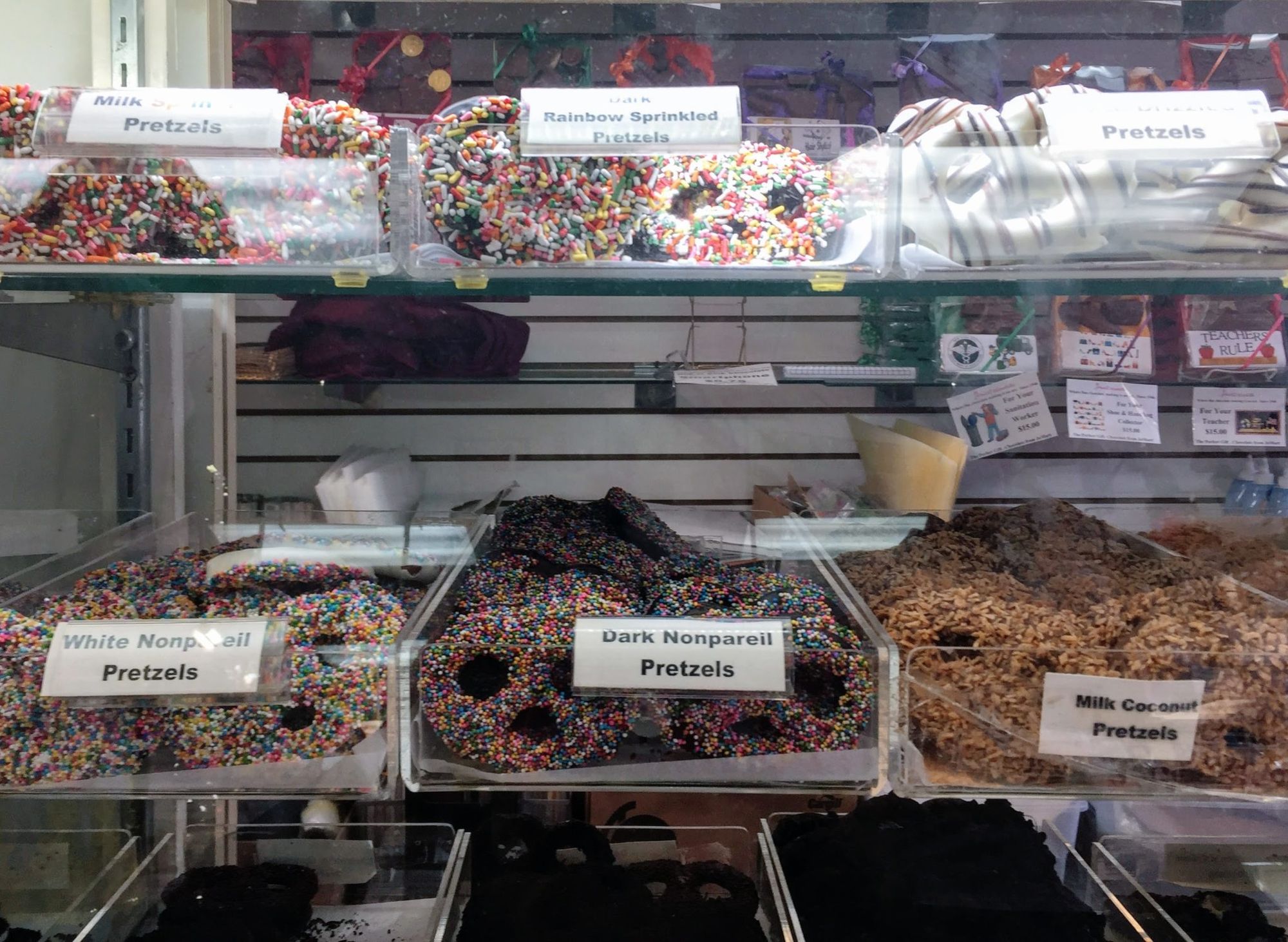
“Caramels are always a staple. And it’s almost embarrassing how many chocolate-covered pretzels we make; I’ve had a six-foot showcase of them for thirty years! The tried and true is great, but right now, there’s also a lot going on in the chocolate industry, like guys specializing in bonbons. A bonbon is nothing more than a soft center with a thin shell of chocolate around it. I’ve got twenty varieties of bonbons. Then you’ve got these other guys just making bean-to-bar chocolate …”
“Bean-to-bar is more of a dining experience,” Michael explains, “where you’re experiencing textures and flavors, and some might be alien to you. It’s chocolate at a very elemental level. So it’s great too.
There’s a market for everything but I can’t expect myself to be excellent at everything,” admits Michael, “so I stick to what I do. I understand what to do for the other products, I have the equipment to do the others, and I do those only on a private label basis, because most of my customers are not coming here for that.”
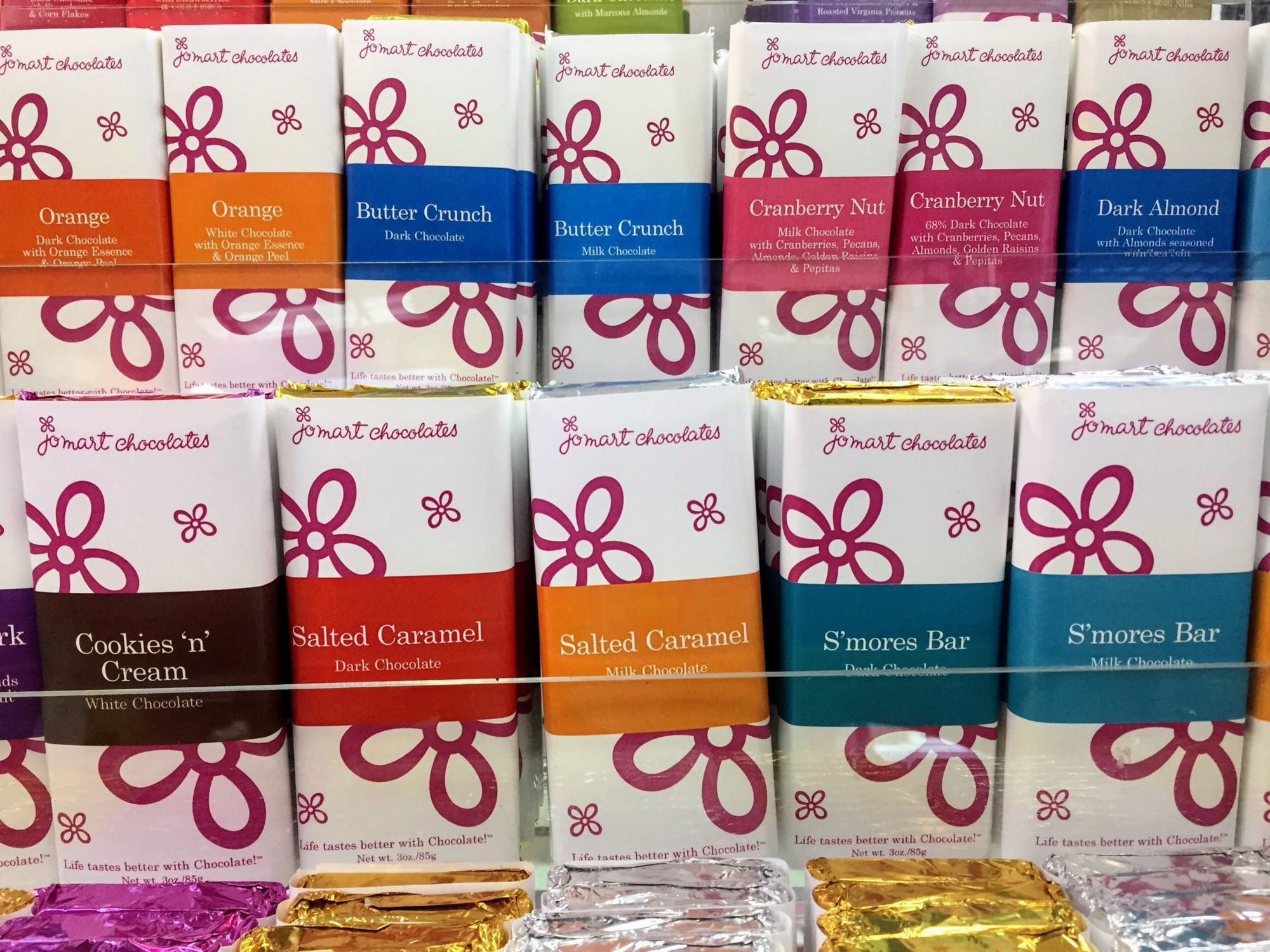
Partnerships & Competition
Jen King, a creative young candymaker, is now crafting her caramels in the JoMart kitchen, under her Liddabit label. “Why is Jen here?” I ask.
“Seven or eight years ago I became aware of these young, passionate people who were going into the chocolate and candy space. All of a sudden, I had got competition.
One of the first persons I met at Brooklyn Eats trade show was Jen’s partner Liz. We were just chatting, and I made it very clear that if they wanted to look upon us as competitors, have at it. But if you want to look at me as a colleague, who can help you with anything, I’d prefer it that way.
“And then last year we had a couple of conversations – they were looking to cut expenses in Industry City, which is getting very expensive. So I said: ‘Well, if you wanna make your footprint smaller, maybe I’ll take over some of your production,” which is what they had in mind.
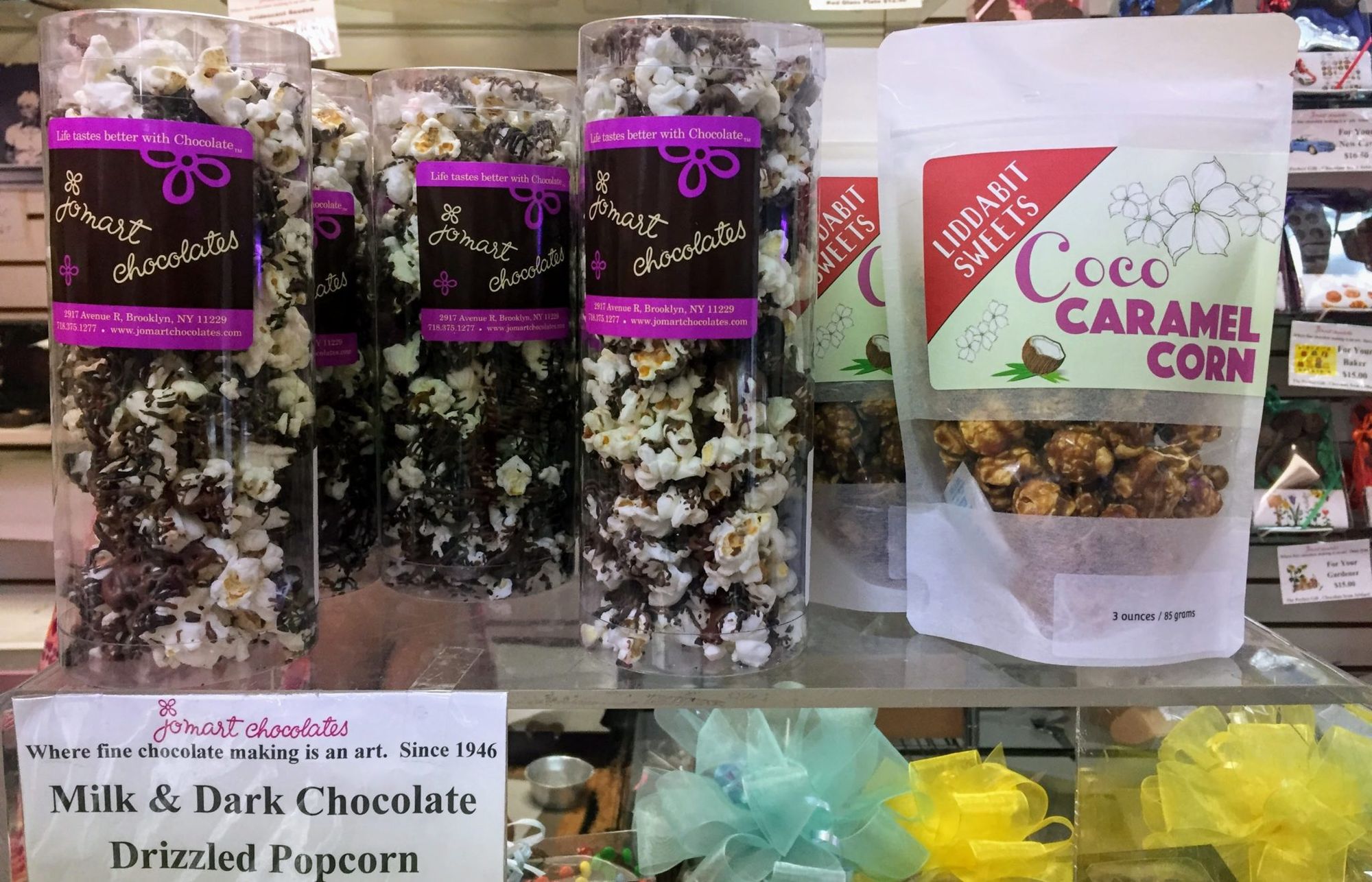
We don’t overlap with our customers and we don’t overlap with many of our products, except, their biggest product is caramel. And their caramel and our caramel is really similar. They’re both excellent.
One thing led to another, and last February Jen started moving stuff in. I hadn’t shared a kitchen with anyone since my father passed away. And if you like to cook, you know your kitchen is a sacred space to you, and I’m not sure you’d be happy with someone looking for equal rights. I needed to kinda see how that felt.
And Jen and I started cooking together. Everything fell into place, from the music we can listen to, to our work ethic. And then one night we got to talking about how we’re gonna keep track of money. How we’re gonna do yours, mine and ours set-up, where it’s fair to everybody.”
“I had no vision of an expansion, and Jen’s answer was, “How about we just do ours?” So
now this is JoMart chocolates, the new home of Liddabit Sweets. Jen has been here full-time since September first.”
Jen happens to pop her head in at this moment. “I just want it on the record, that Michael is one of the best people that I’ve ever met,” she says. “I’m really honored and lucky to be working with him.”
“Will your caramel process evolve together?” I ask.
“What’s gonna happen is the chocolate covered caramels will be the same recipe for both of us, and her wrapped caramels will be the existing recipe that she’s been doing,” explains Michael.
“So you’ll each keep your signature recipes?” I ask Michael.
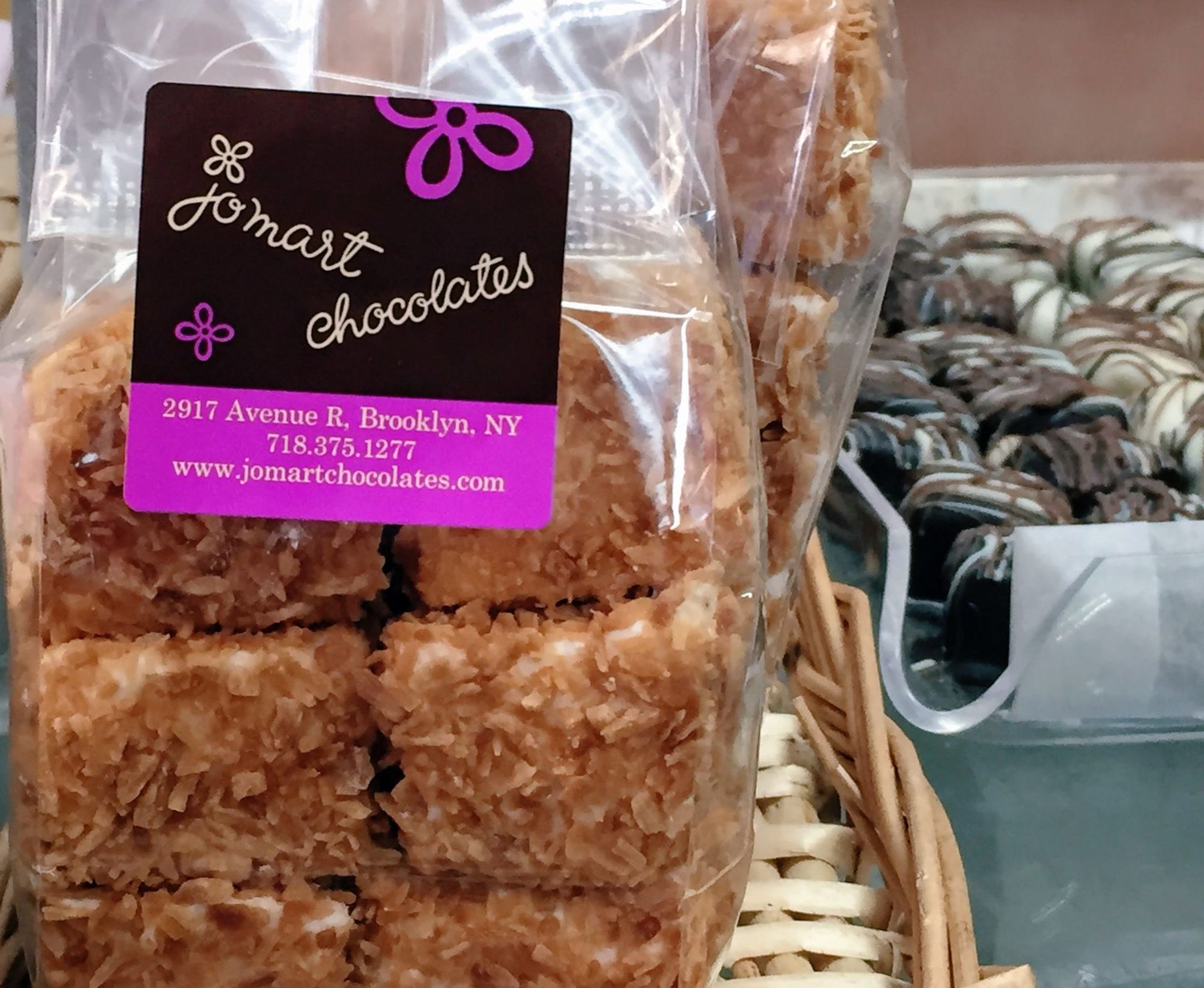
“Oh, yea. Like my marshmallow is not changing for anybody… It’s the best freaking thing there is and nobody does it as well as me!”
Finally! a bubble of bravado surfaces on the chocolate wheel.
Tastes
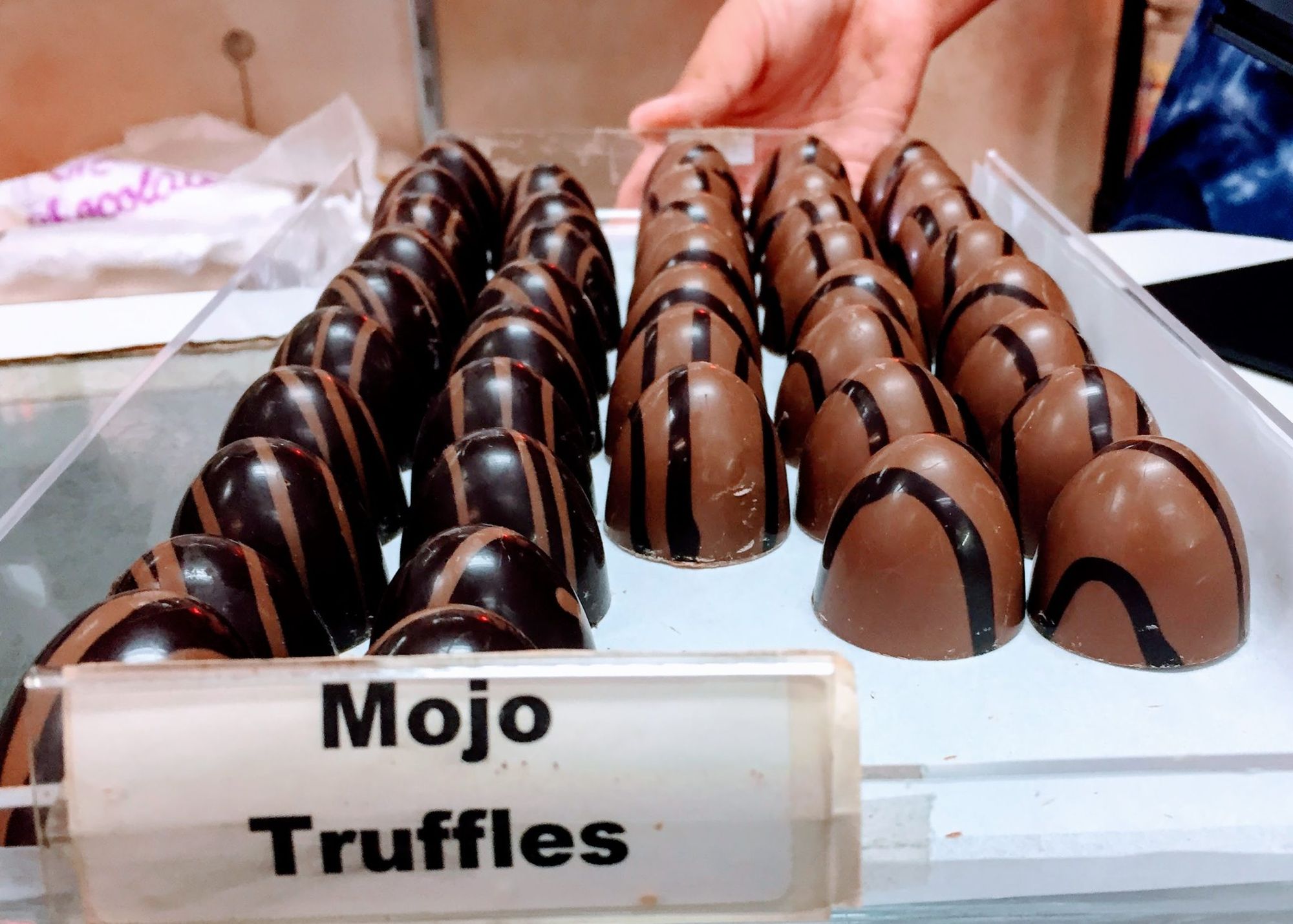
“Have you had any flops that didn’t sell or tasted awful? or you thought they were great, but nobody else did?”
“‘No,” he replies,” I never made anything that tasted awful, only because there’s no reason to make something that tastes awful, unless you screwed up something in the manufacturing.”
“My wife and daughters and I were invited to Belgium in 2001. A private chocolate school was set up for us for a week. I came back all stoked up about making a true Belgian truffle. And I spent a lot of money on molds, and I did it up right and the stuff came out GREAT and it did not sell AT ALL.
A Belgian truffle is just cream and chocolate. That’s all it is. It’s made in a mold, so you have a thin chocolate shell, and that light, chocolate mousse consistency. I started doing everything from lemon meringue to cheesecake, to alcohol flavors, etc… but the item looked too slick for what my customers had in mind.”
“At the same time, I had this square metal mold from my grandfather, and I decided to do a play on our old-time chunky bar. We had been doing a cashew raisin chunky, and then I did a cranberry pecan, and then one that was just dried fruit. And these were all clunky.
“I remember Chunky bars,” I say, “Delicious! But nothing like truffles.”
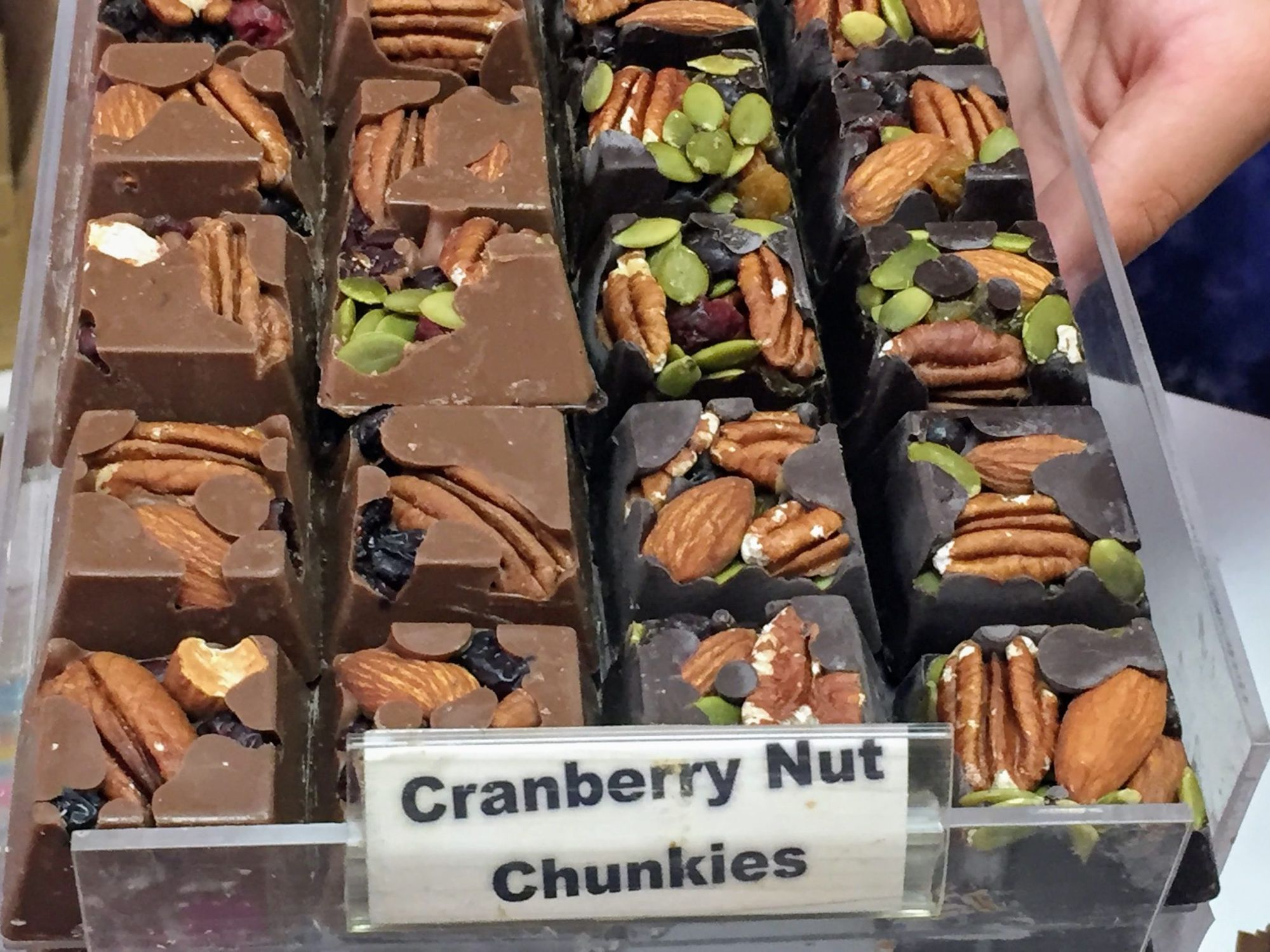
“That’s right. And I started to make those chunkies, at the same time I was doing these truffles. And I was not charging a premium price for the truffles, at all. And the chunkies were outselling the truffles twenty-to-one, from day one.”
“Do you still make the chunkies?” I ask.
“Yea, I make the truffles also, but really it’s more around the holidays.”
Holiday Traditions
“My customers come here for a reason. They have expectations. You can put your take on things, but at the end of the day, if you’re not pleasing people, you’re done. I listen to my customers.
I get a new mold for Easter, and I’m stoked, and it doesn’t sell. Why? Because when it comes to a holiday like Easter, my customers have a mindset of tradition. So if they bought that sitting bunny for their now forty-eight-year-old child, when he was two, they’re still buying that same sitting bunny this spring. And I’ll meet that forty-eight-year-old child, and he’ll say ‘I love that my mom and dad buy me that same bunny every year, it makes me feel like a kid.’ Right?”
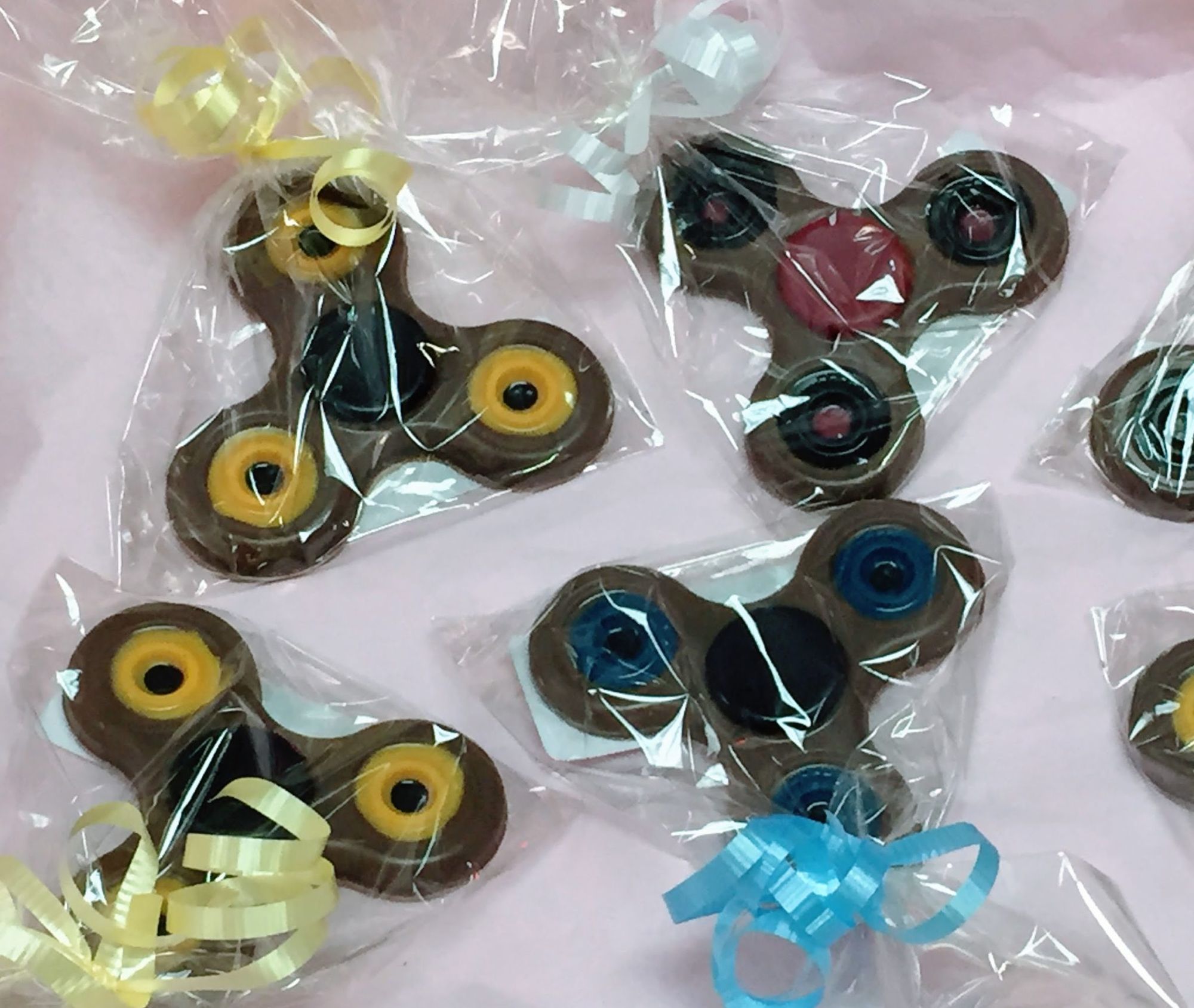
“On the other hand, right now these fidget spinners are very popular and I had a friend of mine make me a mold, so we made them just yesterday, and I sold out. It’s not gonna be a long-term item, but you try to have fun with it, you try not to take yourself too seriously.
At the end of the day, quality rules. Right now in Brooklyn, we’re dealing with expenses going up, higher rents and ethically and morally I believe in a higher minimum wage, but where is the money going to come from? You guys. It’s gonna come from my customers, one way or another. So I have to figure out ways where I can make you happy, and not get you pissed off at me, cause you came in here to spend two dollars and you spent four. It’s a balancing act.”
“Where does your clientele come from?” I ask.
“You know, in Brooklyn there are destinations. It’s not uncommon to travel four neighborhoods over to buy fish or bread. People in Brooklyn have Attitude. They know what they want. They’re not just gonna buy pizza ‘cause it’s across the street from them. If they know where to buy really good pizza, they’re gonna get really good pizza, right?”
“And it’s been that way with chocolate also. I’ve had people call me up, they’ve moved from this neighborhood to the Poconos. And it’s early morning, the Saturday of Easter ‘Okay we’re leaving now, make sure you have everything ready.’ I have customers all over the country. I don’t take them for granted. I get a call from New Mexico: ‘Can you overnight me chocolate-dipped strawberries? ‘Seriously? ‘You can’t find them locally?’”
So if you want a JoMart chocolate you come to the store? Do you ship?
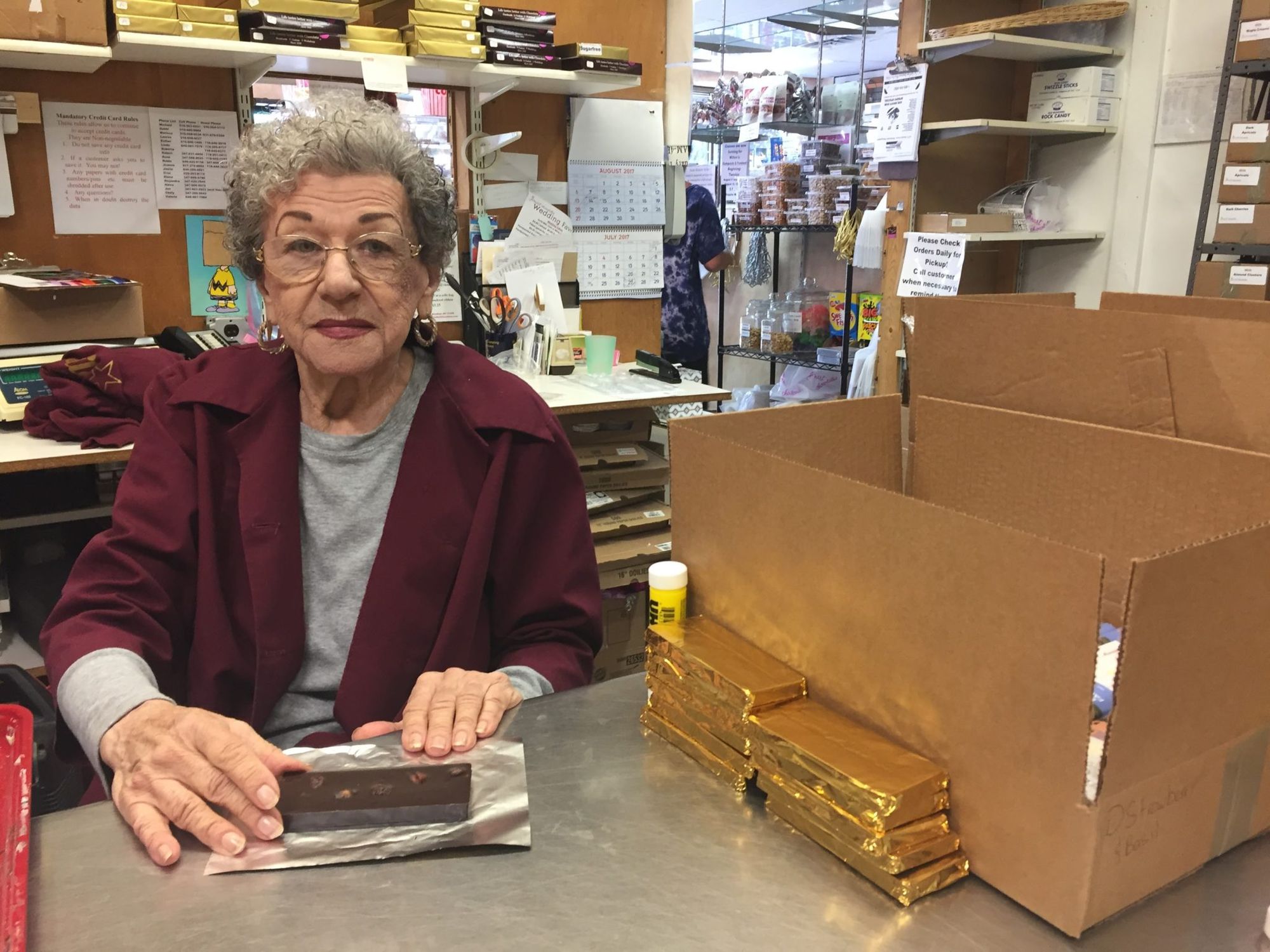
“Yes and yes. You can go online. You can make a phone call (718.375.1277) and speak to a human. You can come to the store. There are stores that we sell to, but they don’t sell under my name, they sell under their name. So, we’ve become a candymaker’s candymaker. Same way if you go into a bakery and you’re buying cookies out of the case. Do you know if every cookie you’re buying is made in that bakery? You assume that it is. They sell JoMart chocolate under their own brand, and that’s fine. My ego is in check.”
“Do your children have any interest in taking over?”
“One day I mentioned to my older daughter, Marissa: “If someone ever showed up with the right amount of money, maybe I’d just pack it in.” And she said to me, ‘Grandpa grew up with a chocolate factory in the family. You grew up with a chocolate factory in the family. I grew up with a chocolate factory in the family. So when I have kids, they’re not gonna have that?’ So I said: ‘Okay, fine! I’m not selling to anybody. I’ll just keep working, no problem.’
So – Emotionally yes. They would love to. And now, bringing Jen in, who is the same age, it sets up options if I don’t want to work, or I can’t work. If Jen is able to learn enough to run production in this company, and my daughters can contribute on their end, let the three of them figure it out. Lots of people get hung up on legacy. That’s above my pay grade. I’m not a micromanager of my children’s lives, I never was. My wife and I were very content to provide them with the tools they need to become independent women.”
“What have I left out?” I say, wrapping it up.
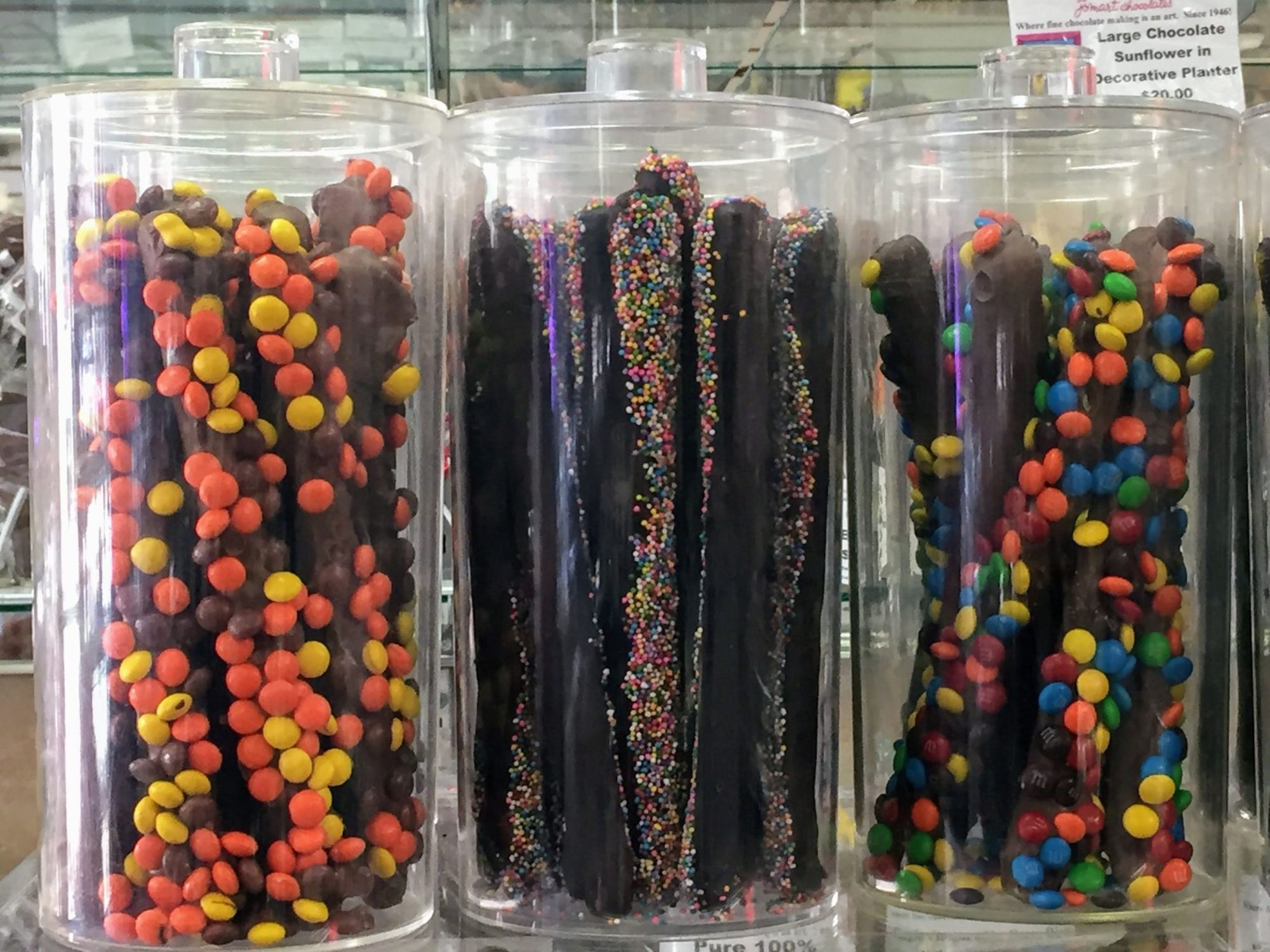
“Do I still eat chocolate? Yes I do, every day.”
“Will it make you live longer?” I ask hopefully.
“We’ll find out,” Michael laughs. “I will add this though. When I walked around trade shows with my father, the attendees from our industry always looked happy. I’ve thought about that a lot.
One of my former employees came to visit me last night and he said: ‘I can’t believe you don’t take any time off and you’re still working full time.’ After doing this for so long, your identity and your occupation come together and it sort of defines you. I only have one email address: it’s michael@jomartchocolates.com. This is who I am. It’s been a lifeblood for my family and I’m very grateful that I’m still able to do what I love to do, and I’m still pretty damn good.
The work is not getting any easier, it’s still physically demanding on your whole being, but wherever I go, when they ask me: ‘What do you do?’ and I answer: ‘I make chocolate,’ I’m greeted with big smiles and a sense of amazement. And it’s the coolest feeling…”
JoMart Chocolates has been serving Brooklyn for 71 years. You can find them at 2917 Avenue R, Brooklyn, NY.




